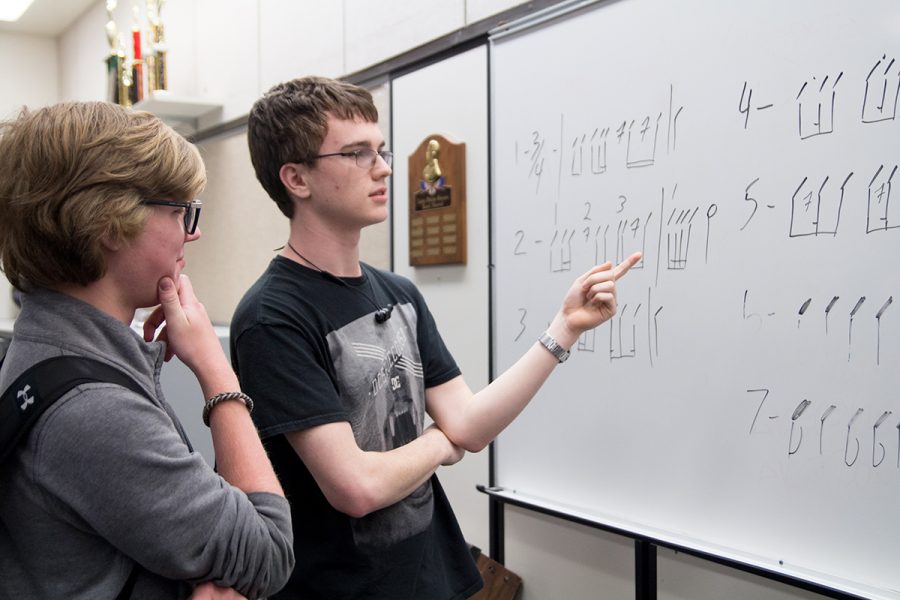Learning music “for dummies”
Music is easier to learn and teach than you think
Photo by Matthew Martin
April 20, 2018
“Is that note flat or sharp?”
“What measure are we on?”
“What count do we come in on?”
“Check the time signature and the key.”
“What type of ancient language is that?”
Many people just look at instruments musicians play and give up, but it’s not as hard as you think. Learning music does take time, but with the correct teaching, it’s easy.
The average grade to start learning music is sixth grade. This is mainly when you are finding the perfect instrument that suits you. There are a plethora of instruments to choose from and different “families” they are put into. There’s brass and woodwind, and then there are more advanced names for instruments such as high and low brass, double reeds, etc.
After a few months of getting used to that instrument, you begin to learn its music notes and how to play it well. These are the early learning stages of music where one learns how to finger musical notes. The notes correspond to where they are located on the staff (the lines that go across the paper).
Reading music is like reading in general, left to right. Playing music requires you to be able to read it off the sheet, and it’s easy. Notes have their own names (G, A, B, C, D, E, F), and after learning your basic notes, then you can move into the advanced pitches of music notes. These advanced notes just change the pitch of the notes, making them sound lower or higher.
For example, use the music note G. With this, we can make the pitch natural, sharp or flat by just putting a simple indication in front of that note or at the front of the staff. The indications used for these signs are easy to read and write. For a natural sign, you can use a normal L then an upside down one right beside it, where they are touching each other. For sharp, you can use a number sign (#). Then for a flat, just use a lowercase B (b). These symbols are located right beside the note in order to make it known as that pitch.
Soon after learning notes, you learn rhythms, like quarter notes and eighth notes. To play rhythms, you just simply use your tongue and brain. Tonguing is using your tongue to stop the air flow into your instrument, which creates rhythms by stopping the note to start another one. What this looks like written would be: a note, a space, another note.
While learning rhythms, you also have to learn note length, such as how many counts the notes last (how many times you tap your foot). A quarter note is one tap of the foot, and a half note is two taps of the foot. A whole note is four counts, so you would hold that note until you have tapped your foot four times.
When high school begins, that’s when music becomes challenging. High school requires being able to sight read, that’s when you see a piece of music for the first time and play it. Sight reading does take skill and effort. It’s not as hard as you think, just be able to know your notes and rhythms. Eventually sight reading becomes easy and important to any musician’s life.
Compared to sight reading, memorizing music is just as easy after a while. Marching band’s main requirement is being able to memorize your music and marching at the same time. No, marching band is not just walking with an instrument. You are expected to play your music while having perfect posture and foot form. Memorizing music is also part of the basic to learning music and will cognitively stay unlike any other.















